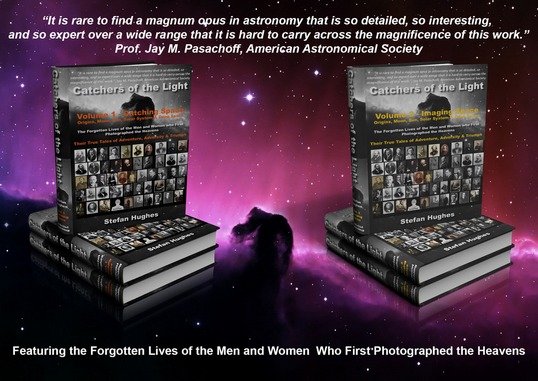Introduction
On the 7th of January 1839, members of the French Academie des Sciences were shown by Francois Arago products of an invention that would forever change the study of astronomy - photography. The astonishingly precise pictures they saw were the work of Louis Jacques Mandé Daguerre, a Romantic painter and printmaker most famous until then as the proprietor of the Diorama, a popular Parisian spectacle featuring theatrical painting and lighting effects.
Each Daguerreotype (as Daguerre dubbed his invention) was a one of a kind image on a highly polished, silver-plated sheet of copper. It was the Polaroid of the day. Even Arago, the then director of the Observatoire de Paris, was reportedly surprised by a daguerreotype image of the moon (which has not survived).
Neither Daguerre's microscopic nor his telescopic Daguerreotypes survive, for on the 8th of March 1839, the Diorama—and with it Daguerre's laboratory—burned to the ground, destroying the inventor's written records and the bulk of his early experimental works. In fact, fewer than twenty-five securely attributed photographs by Daguerre survive—a mere handful of still life, Parisian views, and portraits from the dawn of photography.
1. 1840: Moon; by John William Draper
On the 23rd of March 1840, after a number of unsuccessful attempts, the New York Professor of Chemistry, John William Draper (1811-1882) reported, at a meeting of the New York Lyceum of Natural History, later to become the New York Academy of Sciences, that he had been successful in utilizing a 6-inch (13cm) Reflector Telescope and a small Daguerreotype camera to photograph the Moon’s surface on one inch diameter plates with a twenty minute exposure.
This was the first successful photograph ever taken of an astronomical object.
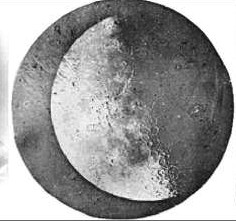
2. 1845: Sun; by Hippolyte Fizeau & Leon Foucault
According to Francois Arago, a number of 'large scale' Daguerreotypes of the Sun were obtained by Armand Hippolyte Louis Fizeau (1819-1896) and Jean Bernard Léon Foucault (1819-1868) at the Paris Observatory. One of these photographs, taken on the 2nd of April 1845, still survives.
This is the earliest surviving 'large scale' photograph ever taken of the Sun showing its spots as well. An earlier 'coin' sized photograph of the Sun by Fizeau and Foucault exists.
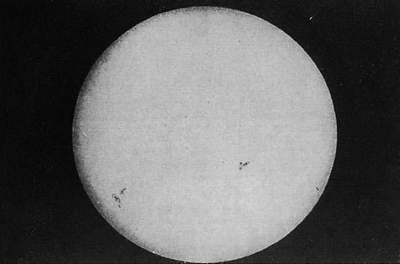
3. Total Solar Eclipse: 1851; by Berkowski
A Daguerreotype photograph of a total eclipse of the Sun which took place on the 28th of July 1851 Konigsberg, Prussia (now Kaliningrad, Russia) was obtained by a Mr. Berkowski, recording the inner corona and several prominences.
This is the first successful photograph ever taken of a Total Eclipse of the Sun.
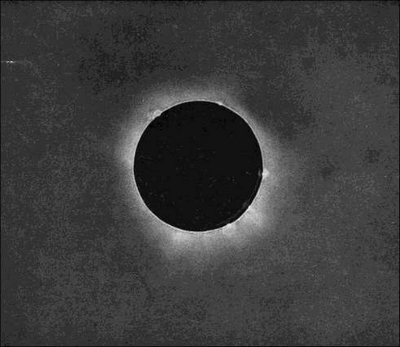
4. 1857: Mizar & Alcor; by George Phillips Bond, John Adams Whipple and James Wallace Black
In 1857 George Philips Bond (1825-1865) and the Boston photographer , John Adams Whipple (1824-1891) and his partner, James Wallace Black (1825-1896), produced wet collodion photographs of the double star Mizar (zeta Ursa Majoris) and its fourth magnitude companion Alcor (80 Ursa Majoris) using the 15-inch (38 cm) ‘Great Harvard’ Refractor.
This was the first successful attempt at photographing a double star and more importantly its fainter companion.
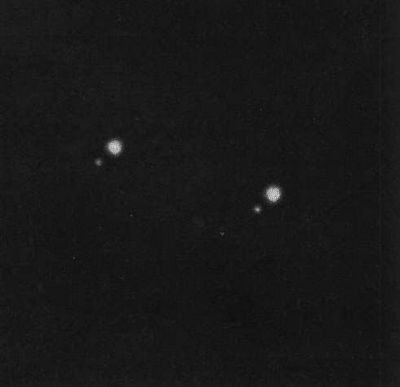
5. 1880: 'Great Orion' Nebula (M42); by Henry Draper
On the 30th of September 1880 the New York Doctor, Henry Draper (1837-1882), the son of John William Draper, photographed the 'Great Orion' nebula (M42) using his 11-inch Alvan Clark Refractor with an exposure of 51 minutes, from his Observatory at Hastings-on-Hudson, New York. This was the very first photograph ever taken of a Deep Space Object (DSO). In March 1881 he took an even better photograph of M42 with an exposure of 104 minutes, and a year later in March 1882 he produced a third photograph, extending the exposure of M42 to 137 minutes.
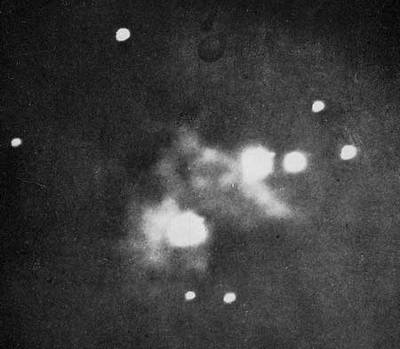
6. 1885: Jupiter & Saturn; by Paul Henry and Prosper Henry
In the years 1885-86 the French astronomer brothers, Paul Henry (1848-1905) and Prosper Henry (1849-1903) took a series of photographs of the planets, when they imaged Jupiter and Saturn.
These photographs were the first successful images ever taken of a planet.
Prior to this time others had tried including contemporary pioneers like Warren de La Rue, but failed; his images of 1857 were only ½ mm across, and were therefore barely visible!
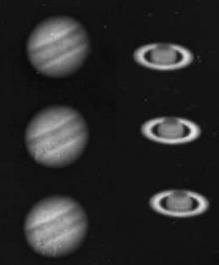
7. 1888: 'Horsehead' Nebula (B33); by Williamina Fleming and William Henry Pickering
In 1888 Williamina Fleming was to make a discovery which Astrophotographers all around the world will thank her for (and curse her just as much!). The dark nebula Barnard 33 was first noticed that year by her on photographic plate No. B2312; taken at the Harvard College Observatory by William Henry Pickering. It was afterwards to become universally known as the ‘Horsehead’ Nebula. Plate 2312 was taken with 90 minute exposure using the Harvard Observatory's 8-inch Bache Telescope. The plate covered an area of sky about 10 degrees square, of which the inner 7 degrees provides good definition. This was the first ever photograph taken of the most iconic all astronomical objects – the famous ‘Horsehead’ Nebula in Orion.
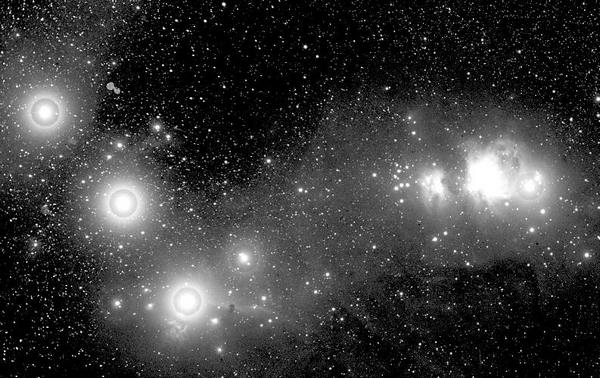
8. 1892: Rho Ophiuch Nebula; by Edward Emerson Barnard
During the period 1892 to 1895 Edward Emerson Barnard (1857-1923) began taking a series of wide field images using the 6-inch Crocker Astrograph at Lick Observatory, Mount Hamilton California.
These included many famous clusters, galaxies and nebulae including, the ‘Pleiades’ open cluster (M45), the ‘Great Orion’ nebula (M42), the ‘Lagoon’ nebula (M8), the ‘Great Andromeda Spiral’ (M31) and the Rho Ophiuchi nebula (IC 4604). These images were the first truly wide wield images ever taken, where each inch on the photographic plate amounted to almost four ‘full moons’ across.
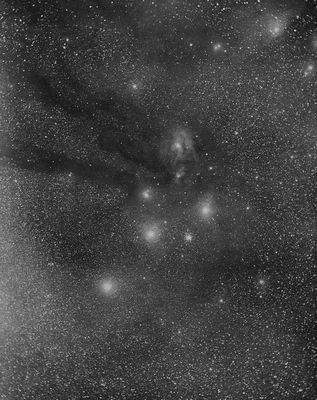
9. 1899: Spiral Galaxy M101 by James Edward Keeler and Charles Dillon Perrine
The series of photographs taken by James Edward Keeler (1857-1900) and Charles Dillon Perrine (1867-1951) during the period 1898 to 1903 using the 36-inch 'Crossley' reflector firmly established the supremacy of large silvered mirrored reflectors over the ‘Great Refractor’ for Deep Space Astrophotography. These images included many famous Messier objects including the ‘Great Hercules Cluster’ (M13), the ‘Trifid’ nebula (M20), the ‘Great Orion’ nebula (M42) and the famous spiral Galaxy M101 in Ursa Major (featured here), as well as less well known objects such as the ‘Whale Galaxy’ NGC 4631, the ‘Iris’ nebula NGC 7023 and the ‘Running Man’ nebula (NGC 1977).
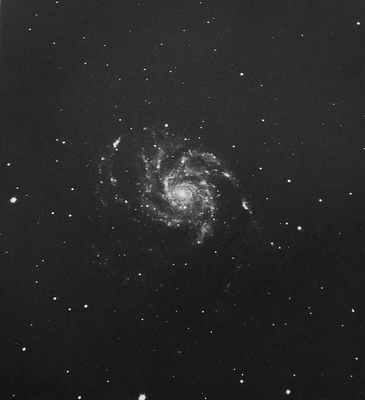
10. 1899: Mare Tranquilitatis: Maurice Loewy and Pierre Henri Puiseux
In the period 1894 to 1910, Maurice Loewy (1833-1907) and Pierre-Henri Puiseux (1855-1928) obtained 6000 photographs, over 500 nights of the Moon using the 24-inch (60 cm) Paris observatory Equatorial Coudé refractor. These images were used to create the first detailed atlas of the Moon - L'Atlas Photographique de la Lune, which was published by the Paris Observatory between the years 1896 to 1910.
Their images remained unsurpassed in their quality for half a century or more until those taken by the Lunar Orbiters in the 1960s.
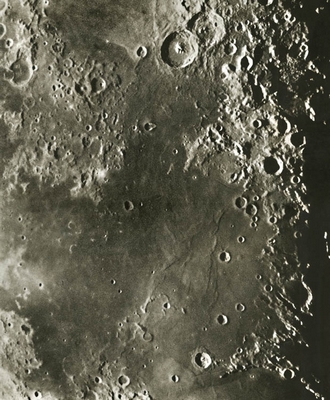
Buy the eBook or Printed Book at the 'Catchers of the Light' shop.
